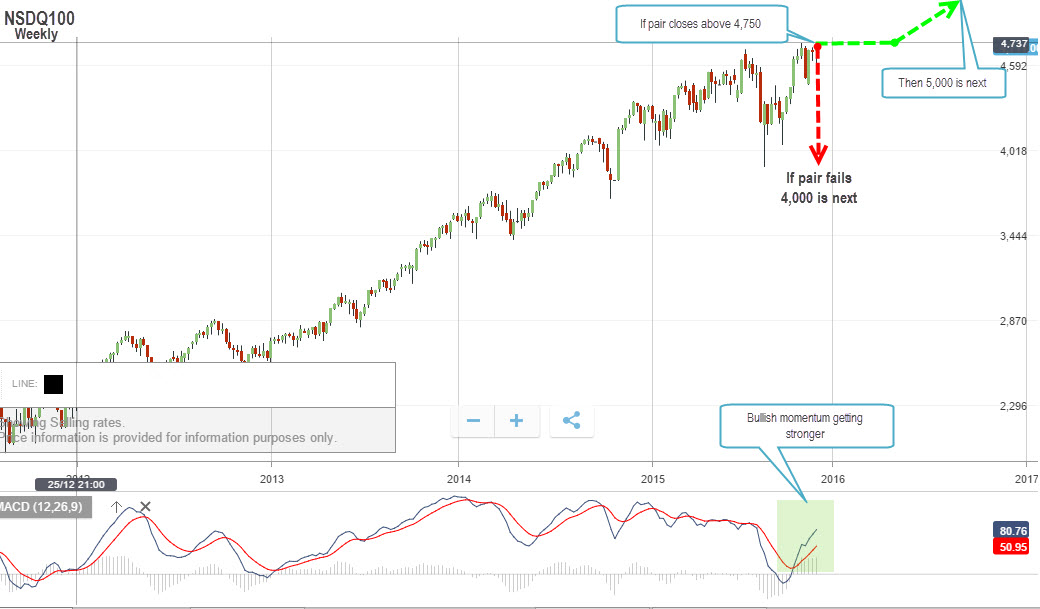Dollar and Sterling in Focus as 2015 Winds Down
Now that the ECB rate decision and US employment data are out of the way, investors can switch gears. This week, markets will have two market-moving events to focus on. The first comes on Thursday when the Bank of England announces the last, and arguably most important, rate decision of 2015. Perhaps even more important than that, though, is Mark Carney’s outlook for the coming year.
Then on Friday, we hop across the pond to the US for November’s retail sales figures. Notably, November’s figures include “Black Friday” sales, typically the biggest shopping day in the year. And let’s not forget it’s also the last retail sales figure before the Fed’s next rate decision.
Pound Sterling Trajectory for 2016
On Thursday, the Bank of England will announce its latest monetary policy decision. At the heart of the matter is whether or not the BoE will follow the Fed’s direction. Currently, the BoE’s benchmark rate is 0.50% and there is no real consensus as to a rate hike in the near future. Mark Carney, the Governor of the BoE, is stuck between the proverbial rock and a hard place.
On the one hand, the BoE has, in the past, tended to follow the Fed’s lead. On the other hand, raising rates at this point in time could be a risky proposition. It’s clear that the ECB is on the verge of more easing. Thus the divergence of policies will weigh heavily on trade between them. Simply put, UK products will become more costly for Eurozone consumers.
The BoE Governor had said recently that the next move for interest rates would be up. However, what he didn’t say was when that would happen. He also pointed out that inflation remains sticky at close to zero, far from the BoE’s 2% target. Analysts don’t foresee a rate hike until Q2 in 2016, and market sentiment seems to push that date out even further. If the BoE does surprise with a rate hike announcement, the Pound Sterling could get a lift. Meanwhile, a rate hike could hit the FTSE100.
If they could, investors would have a few questions to ask Mark Carney. For instance, is he upbeat about the future or not? What is his view on the likelihood and timing of a rate hike? What other factors does the BoE take into account?
Wall Street Eagerly Awaits US Retail Sales
The US Census Bureau will release retail sales figures for November on Friday. Retail sales are viewed as a good indication of the US consumer’s confidence in the economy. What markets will want to see is how wide consumers are opening up their wallets. Robust figures would suggest that consumers have confidence in their ability to “handle” an impending rate hike. If the numbers aren’t strong, however, Dollar bets could be off until after the Fed’s next rate decision.
While robust retail sales could validate a rate hike, it also has significant implications for Wall Street. While a tighter monetary policy tends to hit equity markets, robust retail sales could push US indices to finish the year on a high note. It would also raise the likelihood that Q4 earnings, especially for retailers, could be stronger. A weak figure could weigh on Wall Street, especially in light of the looming Fed rate decision. A combination of low consumer confidence and higher interest rates is simply bad for Wall Street.
Down to Business
Expectations are high that the Bank of England will continue to wait and see on a rate hike. However, if Mark Carney surprises with an upbeat outlook for 2016, the impact on the Pound Sterling will be positive. That suggests that a rate hike could finally be on the table. The limitation to that statement is that a stronger Pound Sterling will weigh on economic growth. A rate hike now might only provide a knee-jerk benefit to the Pound Sterling. In the longer term, with growth threatened, the Pound would come under pressure.
In the absence of a rate decision, Mark Carney’s role and outlook becomes critical. Does he foresee inflation finally heating up and when? What is his overall outlook for the UK economy? Those burning questions will hopefully be answered.
In the US, we’ll learn whether the US consumer is confident enough to spend heavily ahead of the Christmas holidays. The bottom line is that higher retails sales is good for Wall Street indices. However, a disappointment will not only be bad for Wall Street but it will hit the Dollar, as well.
On the Plate
Eurozone Q3 GDP(Tuesday)- If the Eurozone Q3 GDP (third release) is revised higher the Euro might benefit slightly.
Japan Q3 GDP(Tuesday)- If the Japanese Q3 GDP is revised slightly higher in its third release the Yen might gain some ground. Although upside is expect to be limited.
Australian Unemployment Rate(Thursday)- If Australian unemployment will fall below 5.9% after its dramatic fall last month, the Aussie could rally significantly vs the Euro and the Yen.
BoE Rate Decision(Thursday)- One of the most important rate decision by the BoE as of late. If the Bank of England remains dovish on 2016, the sterling could plunge, if the BoE turns upbeat the Sterling might recover some lost ground.
US Retail Sales(Friday)- The main even for Wall Street and the Dollar. If Retail Sales beat expectations , Wall Street indices could move higher. However, if Retail Sales miss, both Wall Street and the dollar could be hit.
Chart of the week
Economic Calendar:
Real Time Economic Calendar provided by Investing.com.


